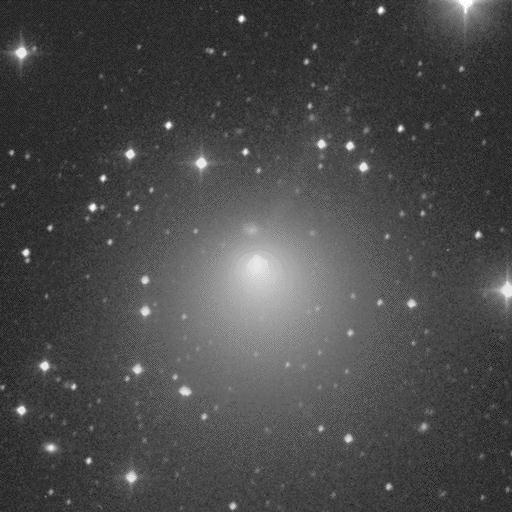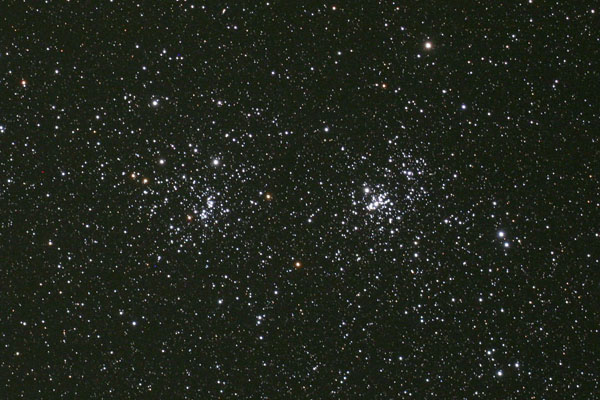|
Zeta Perseids
The Zeta Perseids (ζ–Perseids) are a daylight meteor shower that takes place from about May 20 to July 5. On the peak date of June 13, the radiant is only 16 degrees from the Sun. The shower was discovered at Jodrell Bank Observatory in 1947 using radio equipment. The Zeta Perseids and Beta Taurids are both probably associated with the Taurid Complex of meteor showers. The Arietids The Arietids are a strong meteor shower that lasts from May 22 to July 2 each year, and peaks on June 7. The Arietids, along with the Zeta Perseids, are the most intense daylight meteor showers of the year. The source of the shower is unknown, bu ... and Zeta Perseids maxima tend to blend into one another. References Meteor showers May June {{meteoroid-stub ... [...More Info...] [...Related Items...] OR: [Wikipedia] [Google] [Baidu] |
2P/Encke
Comet Encke , or Encke's Comet (official designation: 2P/Encke), is a periodic comet that completes an orbit of the Sun once every 3.3 years. (This is the shortest period of a reasonably bright comet; the faint main-belt comet 311P/PanSTARRS has a period of 3.2 years.) Encke was first recorded by Pierre Méchain on 17 January 1786, but it was not recognized as a periodic comet until 1819 when its orbit was computed by Johann Franz Encke. Like Halley's Comet, it is unusual in its being named after the calculator of its orbit rather than its discoverer. Like most comets, it has a very low albedo, reflecting only 4.6% of the light its comet nucleus, nucleus receives, although comets generate a large coma (cometary), coma and tail that can make them much more visible during their perihelion (closest approach to the Sun). The diameter of the nucleus of Encke's Comet is 4.8 km. Discovery As its official designation implies, Encke's Comet was the first periodic comet discovered af ... [...More Info...] [...Related Items...] OR: [Wikipedia] [Google] [Baidu] |
Taurids
The Taurids are an annual meteor shower, associated with the comet Encke. The Taurids are actually two separate showers, with a Southern and a Northern component. The Southern Taurids originated from Comet Encke, while the Northern Taurids originated from the asteroid 2004 TG10, 2004 TG10, possibly a large fragment of Encke due to its similar orbital parameters. They are named after their Radiant (meteor shower), radiant point in the constellation Taurus (constellation), Taurus, where they are seen to come from in the sky. Because of their occurrence in late October and early November, they are also called Halloween Meteoroid#Fireball, fireballs. Since 2P/Encke is such a short period comet, the meteors have the slowest impact speed of the annual well-known meteor showers. Comet Encke and the Taurid complex are believed to be remnants of a disrupted 40-km-class comet from about 10,000 years ago, breaking into several pieces and releasing material by normal Coma (cometary), come ... [...More Info...] [...Related Items...] OR: [Wikipedia] [Google] [Baidu] |
Perseus (constellation)
Perseus is a constellation in the Northern celestial hemisphere, northern sky, named after the Greek mythology, Greek mythological hero Perseus. It is one of the 48 ancient constellations listed by the 2nd-century astronomer Ptolemy, and among the IAU designated constellations, 88 modern constellations defined by the International Astronomical Union (IAU). It is located near several other constellations named after ancient Greek legends surrounding Perseus, including Andromeda (constellation), Andromeda to the west and Cassiopeia (constellation), Cassiopeia to the north. Perseus is also bordered by Aries (constellation), Aries and Taurus (constellation), Taurus to the south, Auriga (constellation), Auriga to the east, Camelopardalis to the north, and Triangulum to the west. Some Celestial cartography, star atlases during the early 19th century also depicted Perseus holding the disembodied head of Medusa, whose Asterism (astronomy), asterism was named together as ''Perseus et Capu ... [...More Info...] [...Related Items...] OR: [Wikipedia] [Google] [Baidu] |
Meteor Shower
A meteor shower is a celestial event in which a number of meteors are observed to radiate, or originate, from one point in the night sky. These meteors are caused by streams of cosmic debris called meteoroids entering Earth's atmosphere at extremely high speeds on parallel trajectories. Most meteors are smaller than a grain of sand, so almost all of them disintegrate and never hit the Earth's surface. Very intense or unusual meteor showers are known as meteor outbursts and meteor storms, which produce at least 1,000 meteors an hour, most notably from the Leonids. The Meteor Data Centre lists over 900 suspected meteor showers of which about 100 are well established. Several organizations point to viewing opportunities on the Internet. NASA maintains a daily map of active meteor showers. Historical developments A meteor shower in August 1583 was recorded in the Timbuktu manuscripts.Abraham, Curtis"Stars of the Sahara" ''New Scientist'', issue 2617,15 August 2007, page 39–41 I ... [...More Info...] [...Related Items...] OR: [Wikipedia] [Google] [Baidu] |
Radiant (meteor Shower)
The radiant or apparent radiant of a meteor shower is the celestial point in the sky from which (from the point of view of a terrestrial observer) the paths of meteors appear to originate. The Perseids, for example, are meteors which appear to come from a point within the constellation of Perseus. Meteor paths appear at random locations in the sky, but the apparent paths of two or more meteors from the same shower will diverge from the radiant. The radiant is the vanishing point of the meteor paths, which are parallel lines in three-dimensional space, as seen from the perspective of the observer, who views a two-dimensional projection against the sky. The geometric effect is identical to crepuscular rays, where parallel sunbeams appear to diverge. A meteor that does not point back to the known radiant for a given shower is known as a ''sporadic'' and is not considered part of that shower. Shower meteors may appear a short time before the radiant has risen in the observer's ea ... [...More Info...] [...Related Items...] OR: [Wikipedia] [Google] [Baidu] |
Jodrell Bank Observatory
Jodrell Bank Observatory ( ) in Cheshire, England hosts a number of radio telescopes as part of the Jodrell Bank Centre for Astrophysics at the University of Manchester. The observatory was established in 1945 by Bernard Lovell, a radio astronomer at the university, to investigate cosmic rays after his work on radar in the Second World War. It has since played an important role in the research of meteoroids, quasars, pulsars, masers, and gravitational lenses, and was heavily involved with the tracking of space probes at the start of the Space Age. The main telescope at the observatory is the Lovell Telescope. Its diameter of makes it the third largest steerable radio telescope in the world. There are three other active telescopes at the observatory; the Mark II and and 7 m diameter radio telescopes. Jodrell Bank Observatory is the base of the Multi-Element Radio Linked Interferometer Network (MERLIN), a National Facility run by the University of Manchester o ... [...More Info...] [...Related Items...] OR: [Wikipedia] [Google] [Baidu] |
Beta Taurids
The Beta Taurids (β–Taurids) are an annual meteor shower belonging to a class of "daytime showers" that peak after sunrise. The Beta Taurids are best observed by radar and radio-echo techniques. The Beta Taurids are normally active from June 5 to July 18. They emanate from an average radiant of right ascension 5h18m, declination +21.2 and exhibit maximum activity around June 28–29 (Solar Longitude=98.3 deg). The maximum hourly rate typically reaches about 25 as seen on radar. Non-radio observers are faced with a very difficult prospect, because the Beta Taurid radiant is just 10–15 degrees west of the Sun on June 28. These Beta Taurids are the same meteoroid stream as the Taurids (which form a meteor shower in late October). The Earth intersects this stream of debris twice, once in late October and once in late June, forming two separate meteor showers. However, because the October event occurs at night, it is far more visible and better known than the Beta Taurids, whic ... [...More Info...] [...Related Items...] OR: [Wikipedia] [Google] [Baidu] |
Arietids
The Arietids are a strong meteor shower that lasts from May 22 to July 2 each year, and peaks on June 7. The Arietids, along with the Zeta Perseids, are the most intense daylight meteor showers of the year. The source of the shower is unknown, but scientists suspect that they come from the asteroid 1566 Icarus, although the orbit also corresponds similarly to 96P/Machholz. First discovered at Jodrell Bank Observatory in England England is a Countries of the United Kingdom, country that is part of the United Kingdom. It is located on the island of Great Britain, of which it covers about 62%, and List of islands of England, more than 100 smaller adjacent islands. It ... during the summer of 1947, the showers are caused when the Earth passes through a dense portion of two interplanetary meteoroid streams, producing an average of 60 shooting stars each hour, that originate in the sky from the constellation Aries and the constellation Perseus. However, because both const ... [...More Info...] [...Related Items...] OR: [Wikipedia] [Google] [Baidu] |
International Meteor Organization
The International Meteor Organization (IMO) was formally founded in 1988 from predecessor gatherings over many years. IMO has several hundred members and was created in response to an ever-growing need for international cooperation on amateur and professional meteor work. The collection of meteor observations by several methods from all around the world ensures the comprehensive study of meteor showers and their relation to comets and interplanetary dust. IMO publishes a bimonthly journal called ''WGN''WGN = "werkgroepnieuws" (Dutch language), in English as "workgroup news". WGN was initially a circular before it became a journal. and holds an annual International Meteor Conference (IMC) in September.IMO website. See also *American Meteor Society The American Meteor Society, Ltd. (AMS) is a non-profit scientific organization established to encourage and support the research activities of both amateur and professional astronomers who are interested in the field of meteor astrono ... [...More Info...] [...Related Items...] OR: [Wikipedia] [Google] [Baidu] |
Meteor Showers
A meteor shower is a celestial event in which a number of meteors are observed to radiate, or originate, from one point in the night sky. These meteors are caused by streams of cosmic debris called meteoroids entering Earth's atmosphere at extremely high speeds on parallel trajectories. Most meteors are smaller than a grain of sand, so almost all of them disintegrate and never hit the Earth's surface. Very intense or unusual meteor showers are known as meteor outbursts and meteor storms, which produce at least 1,000 meteors an hour, most notably from the Leonids. The Meteor Data Centre lists over 900 suspected meteor showers of which about 100 are well established. Several organizations point to viewing opportunities on the Internet. NASA maintains a daily map of active meteor showers. Historical developments A meteor shower in August 1583 was recorded in the Timbuktu manuscripts.Abraham, Curtis"Stars of the Sahara" ''New Scientist'', issue 2617,15 August 2007, page 39–41 In ... [...More Info...] [...Related Items...] OR: [Wikipedia] [Google] [Baidu] |





